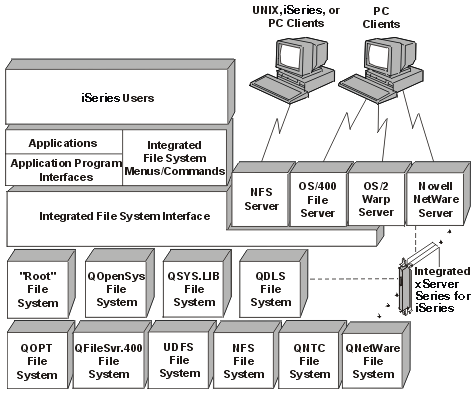A file system provides you the support to access specific segments of storage that are organized as logical units. These logical units on your server are files, directories, libraries, and objects.
Each file system has a set of logical structures and rules for interacting with information in storage. These structures and rules may be different from one file system to another. In fact, from the perspective of structures and rules, the i5/OS™ support for accessing database files and various other object types through libraries can be thought of as a file system. Similarly, the i5/OS support for accessing documents (which are really stream files) through the folders structure might be thought of as a separate file system.
The integrated file system treats the library support and folders support as separate file systems. Other types of file management support that have differing capabilities are also treated as separate file systems.
You can interact with any of the file systems through a common interface. This interface is optimized for the input and output of stream data, in contrast to the record input and output that is provided through the data management interfaces. The provided commands, menus and displays, and application program interfaces (APIs) allow interaction with the file systems through this common interface.

Use Network File Systems through the integrated file system interface
The Network File System (NFS) is accessible through the integrated file system interface. Be aware of these considerations and limitations.
 The QNTC file system provides access to
data and objects that are stored on an
The QNTC file system provides access to
data and objects that are stored on an 